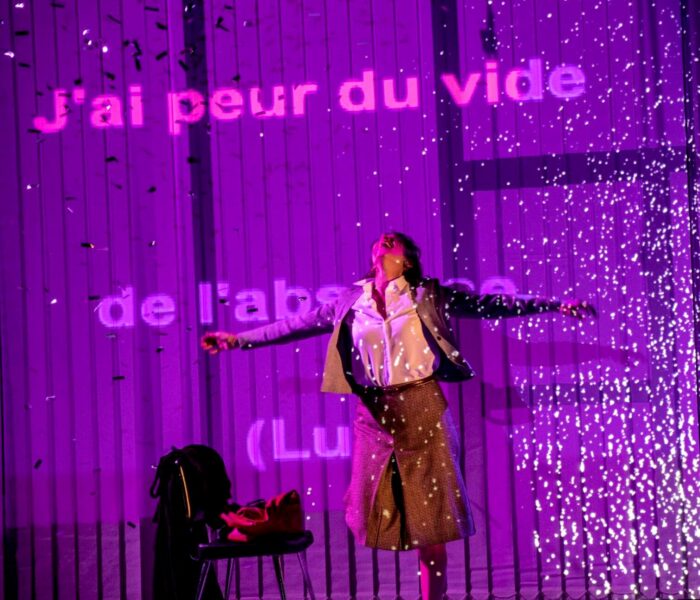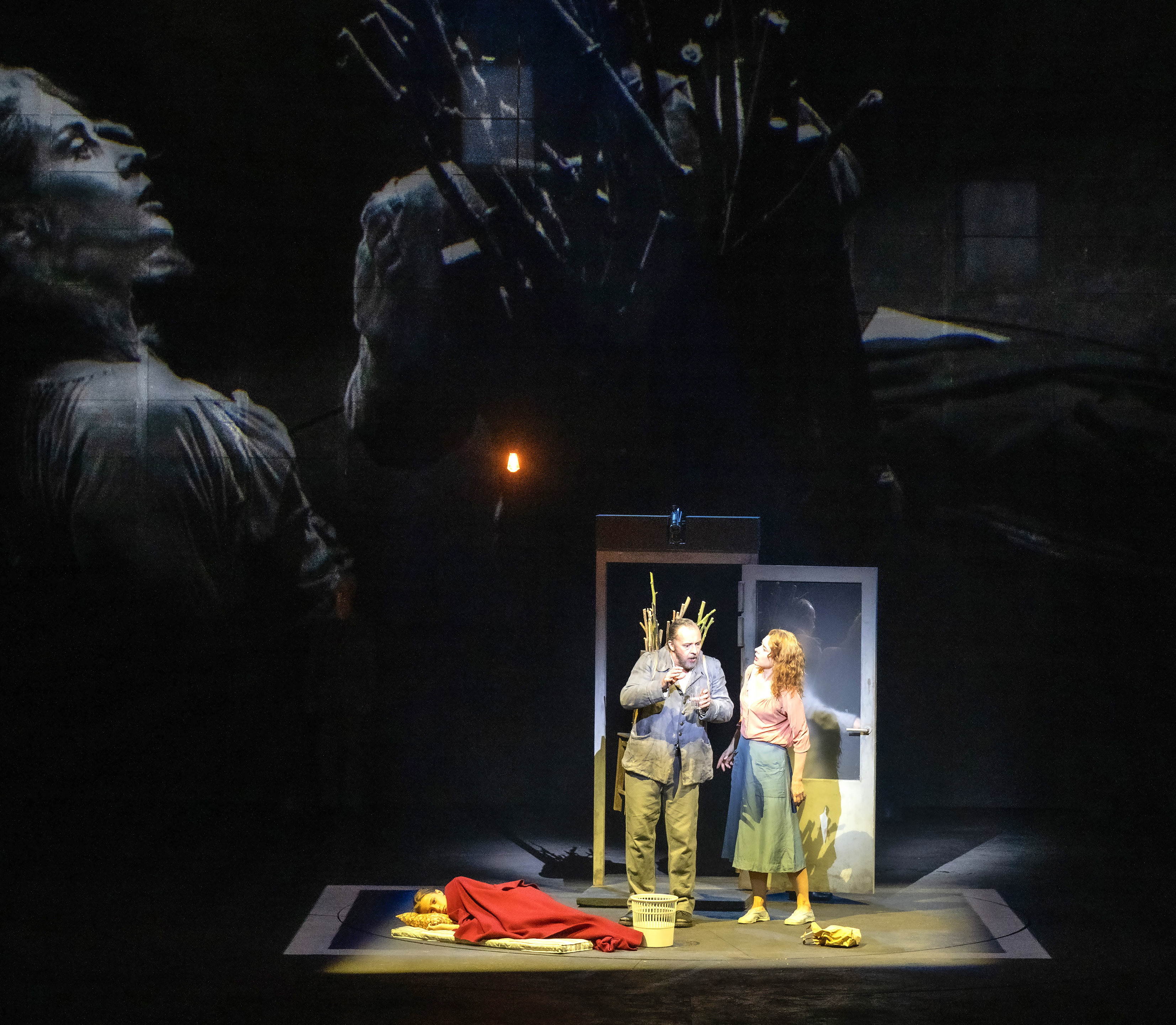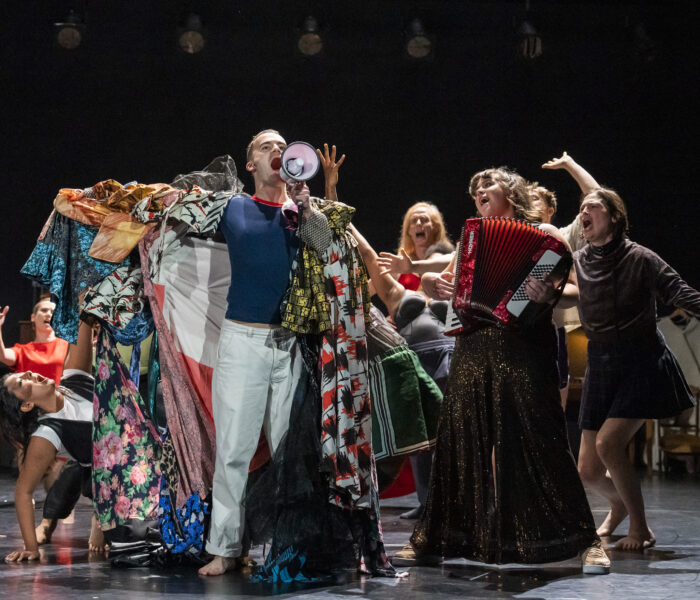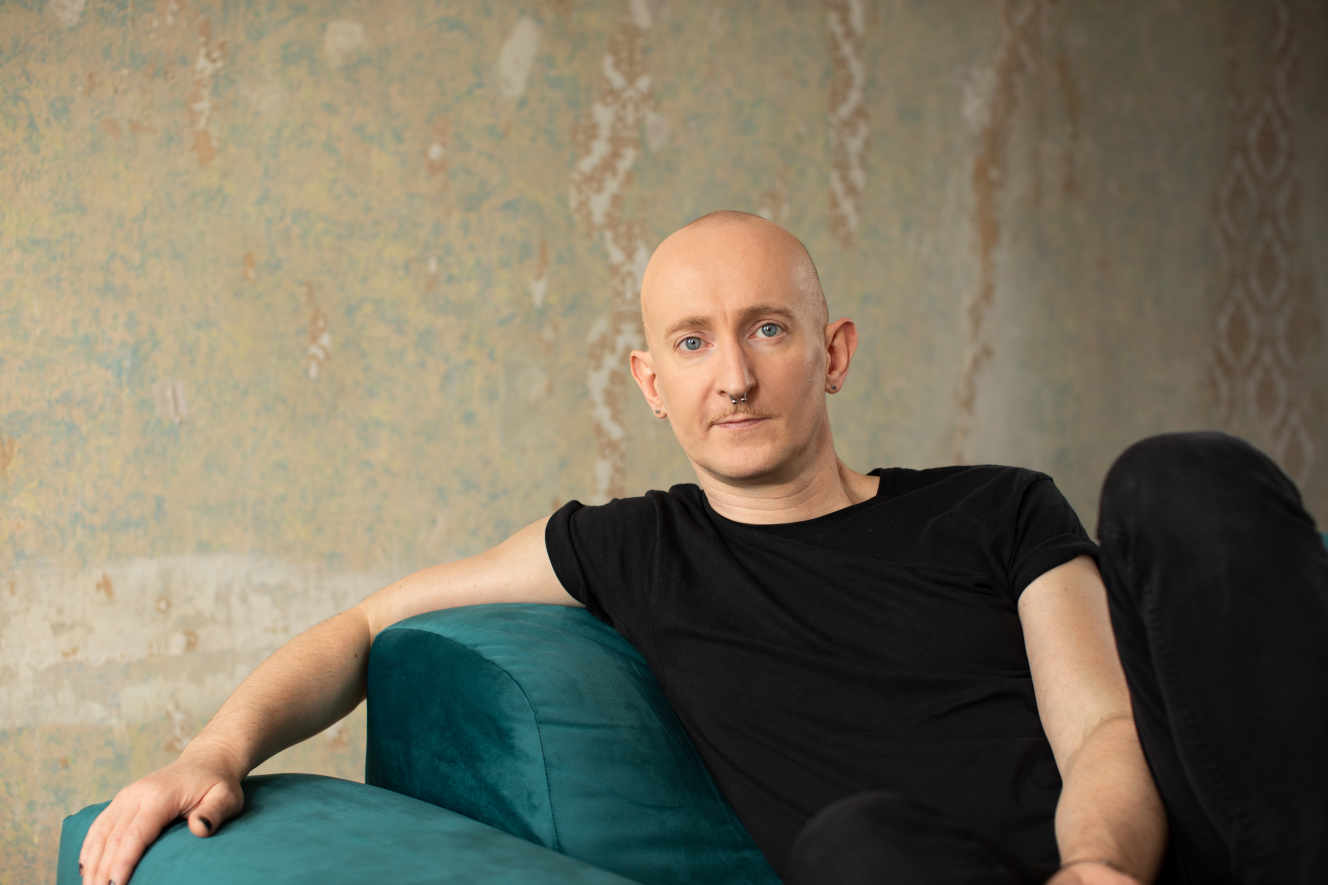Continuing his fruitful collaboration with playwright Martin Crimp, Sir George Benjamin returns to Aix-en-Provence, eleven years after Written on skin, to conduct the world premiere of his fourth opera, Picture a day like this, for which the stage of the Théâtre du Jeu de Paume provides an ideal setting.
Smaller in scale than his last two operas, Picture a day like this returns to the compact form and legendary spirit of his first work, Into the little Hill. Into the little Hill (based on Le Joueur de flûte d'Hamelin) commissioned by the Festival d'Automne de Paris in 2006. "Picture" is a fairy tale for adults written from three literary sources, the folk story entitled The Happy Man's Shirt, the Roman d'Alexandre and Kisā Gotamī's tale (Book VIII, number 13), which were to feed the playwright's imagination. " I let these different traditions meet freely to make something new ," he stresses. The story is an initiation, written in a resolutely contemporary style, with a good dose of humor and even derision, despite the seriousness of the subject.
Unable to accept the death of her child, La Femme (as she is called) has been told that if, within 24 hours, she could find a button on the sleeve of a happy person's suit, her child would come back to life. So she begins her journey, with a page torn from an old book that will show her where to turn. This is what she tells us in the introductory monologue, begun a cappella in a very sober declamation. The timbre is warm and the voice bewitching, that of mezzo Maria Crebassa, ready to travel the world to save her child.
In the course of encounters
La Femme's quest involves a series of encounters and as many distinct scenes in this one-act chamber opera lasting one hour and a few minutes. The Lovers are first on the list: Blinds down / Near a pile of clothes you'll find two lovers on the floor, she reads on her page. Wearing black boots and a beige raincoat over a mid-calf-length dress (costumes by Marie La Rocca), La Femme looks austere against the luxury and shimmering décor of the two lovers (countertenor Cameron Shahbazi and soprano Beate Mordal in ecstasy). They display their happiness before the lover's engaging words to La Femme create discord in the couple and confusion in the voices. In the staging by Daniel Jeanneteau (already present in Into the litlle Hill) and Marie-Christine Soma, stage changes are made on sight during the orchestral interludes.
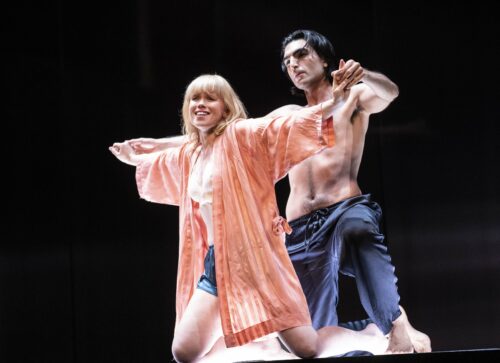
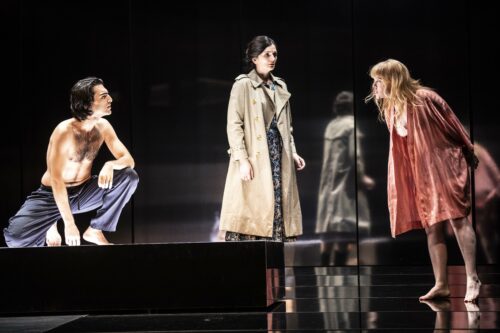
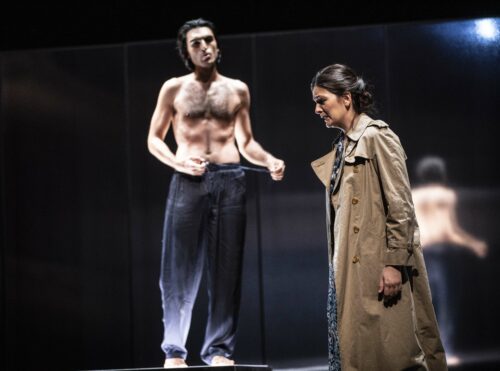
The Artisan, and happy to be one(John Brancy), is second on the list, installed in a sort of glass cage. He is clad in a sparkling suit, entirely sewn with buttons: " horn, glass, silver, each cast in a crucible of fire ", sings the baritone, joined by the alchemy of the orchestra's timbres (the faithful Mahler Chamber Orchestra under Benjamin's baton), which hem in the voice without ever overwhelming it. The lively baritone does his number (with a sophisticated, ornamental melodic line reaching dizzying heights), but refuses to give away any of his buttons until he has his molecule (Chlopromazine, maximum dose), revealing arms full of scars and a mutilated body. The resonance of the tube bells, which never augurs well, signals the failure of each attempt.

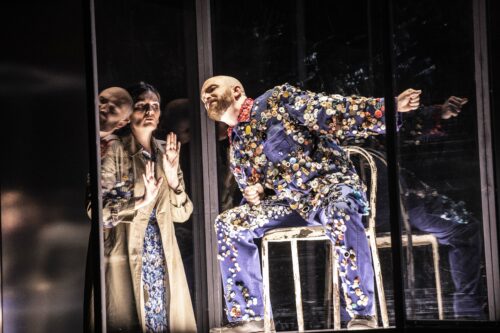

The stage is once again remodeled. From the back of the stage, flanked by her assistant (returning Cameron Shahbazi with partner Beate Mordal) comes the Composer walking on a conveyor belt: " Known the world over, young and idolized, composer of genius ", informs the page. Her soprano is agile and conquering, but soon falters as the self-centered Compositrice confesses her doubts and fragility, humorously underscored by the woodwinds in the pit. "Say you're happy," begs La Femme... " We have no more time for you," signifies the implacable careerist, unconcerned by the misfortunes of others.
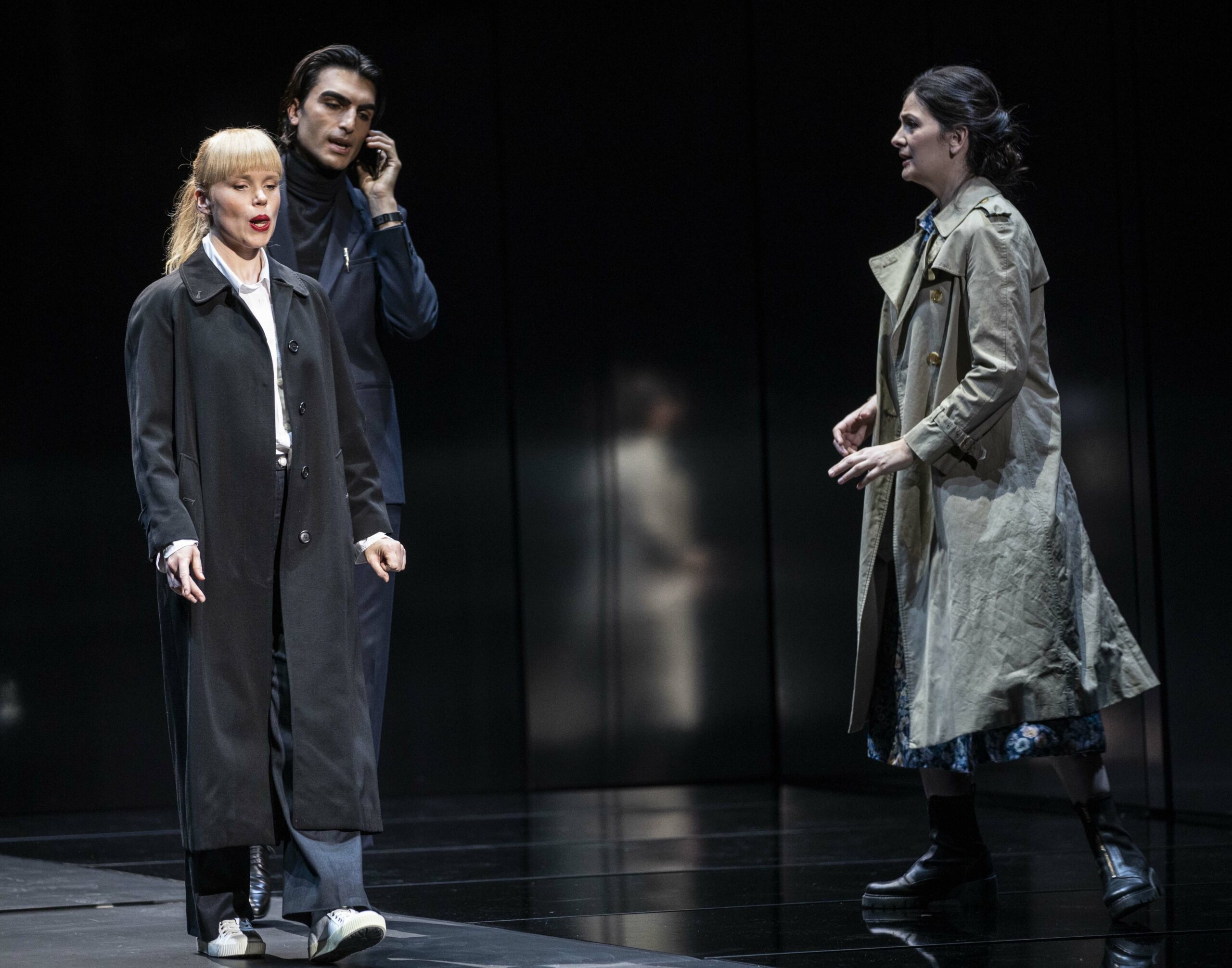
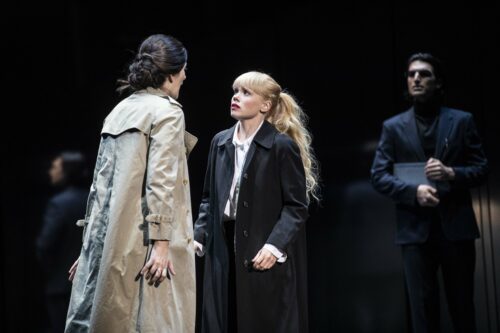
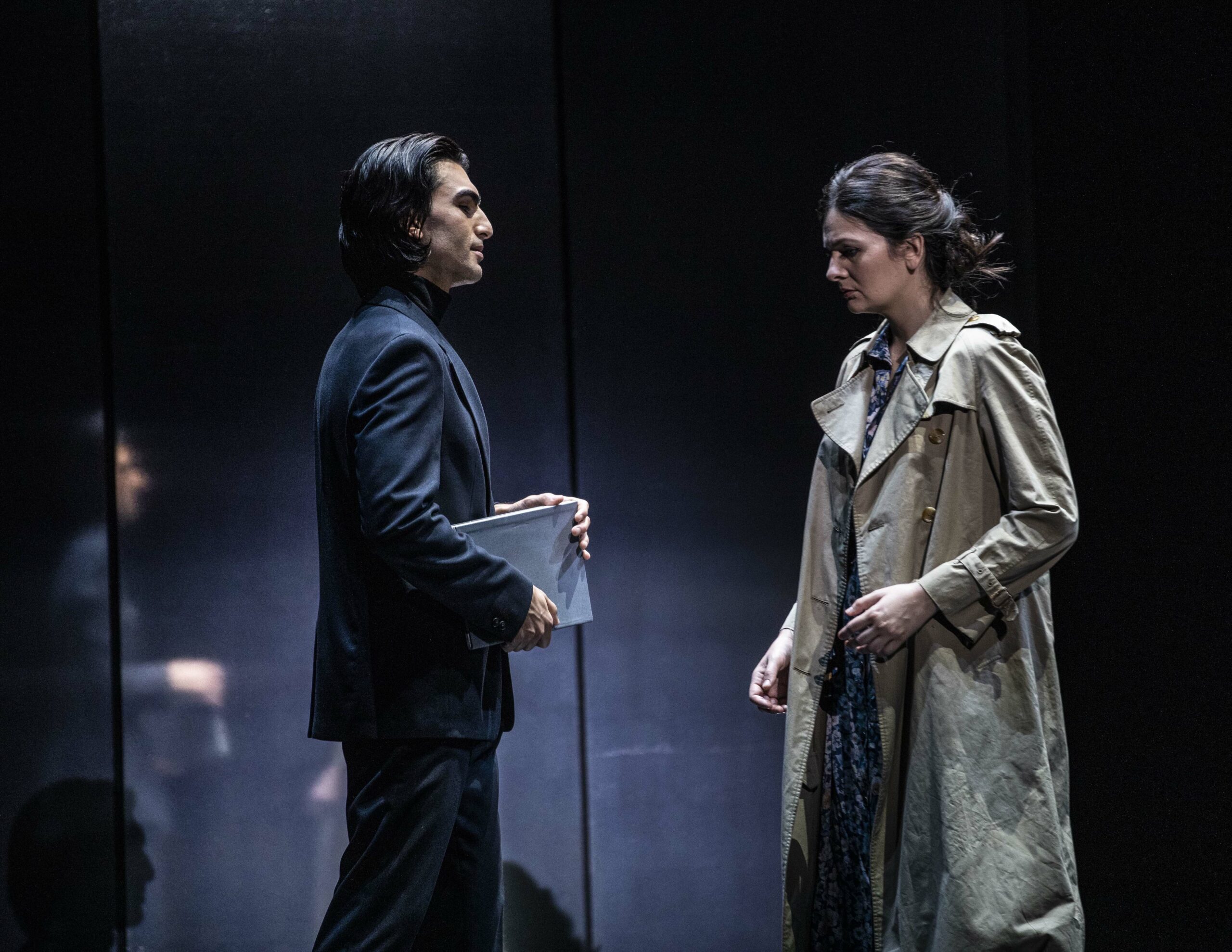
The observation is bitter: La Femme's Aria, which repeats its refrain (" Terre froide - les tiges mortes des fleurs reprennent vie - pourquoi pas mon fils? ") takes on an air of revolt, supported by the orchestra's offensive strings: " je voulais des miracles" (I wanted miracles ), she laments. The appearance of the harp suddenly evokes Monteverdi and Orpheus's aria, in which he attempts to seduce Caron in order to cross the river to the underworld!
The encounter with the Collector (John Brancy, sinister and manipulative) is no more fruitful. The man relies on his power of seduction and the market value of his paintings (he has rooms full of miracles!). Like Judith in Bluebeard's Castle, La Femme expressly asks him to open the door. On the page she's just thrown away is Zabelle's name, the last on the list...
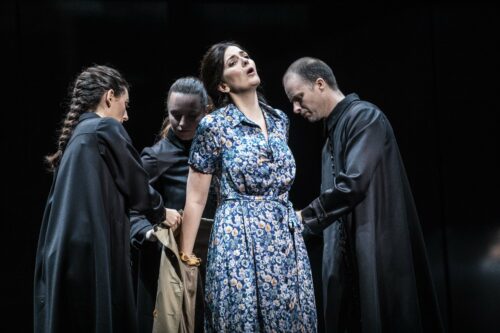
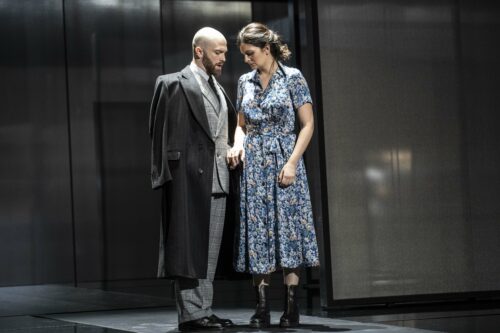
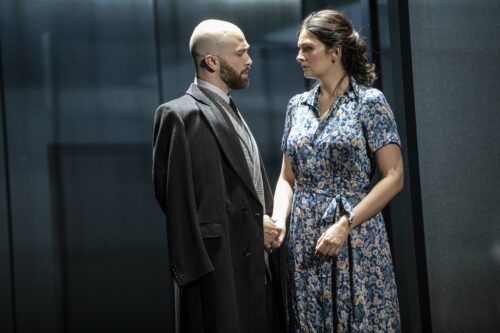
The deceptive luxuriance of the enchanted garden
The fable takes another turn when La Femme enters Zabelle's garden, engaging her to look at the world differently. A tulle is installed at the edge of the stage, welcoming the plant world and the most luxuriant manifestations (chemically activated waterscapes in glass tanks) of video artist Hicham Berrada. Zabelle's vocals(Anna Prohaska, radiant) are generous, unfurling their arabesques towards luminous spheres; Marianne Crebassa's mezzo, meanwhile, discovers the purest register of her high notes. But the tone changes when Zabelle recounts her misfortunes: " I'm only happy because I don't exist ", she finally confesses.

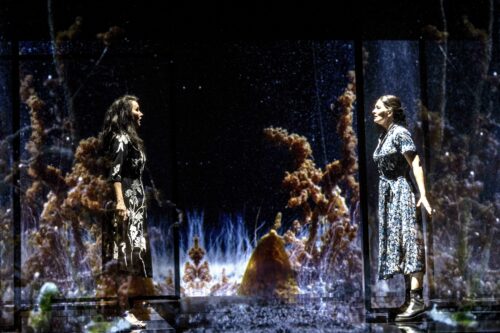
The tubular bells are more insistent than ever after an orchestral climax in which all the instrumental lines clash in pure dissonance. The final monologue of La Femme is sublime, Marianna Crebassa's extraordinary performance displaying an expressive palette that extends to the full extent of her range, combining power and depth of emotion. Eminently sensual music (the velvety emotion of the bass flute) rises from the pit, adding the final touches to this jewel chiselled by four hands, as precious as the shining button in the heroine's hand.
Michèle Tosi
Festival d'Aix-en -Provence, Théâtre du jeu de Paume, le 11-07-2023
George Benjamin (b. 1960): Picture a day like this, opera in one act and seven scenes; original text by Martin Crimp; direction and scenography, dramaturgy, lighting, Daniel Jeanneteau and Marie-Christine Soma; costumes Marie La Rocca; video Hicham Berrada. Woman, Marianne Crebassa; Zabelle, Anna Prohaska; Lover 1 / composer, Beate Mordal; Lover 2 / composer's Assistant, Cameron Shahbazi; Artisan / Collector, John Brancy; Actors: Lisa Grandmottet, Eulalie Rambaud, Matthieu Baquey ; Mahler Chamber Orchestra ; conductor, George Benjamin.
Photos © Jean-Louis Fernandez



)
